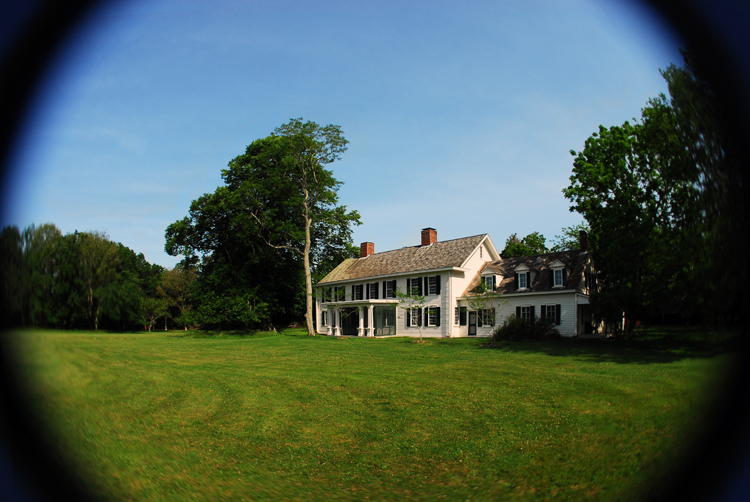Photographs of the William Floyd estate in Mastic Beach taken last spring by a Roslyn Heights photographer known as Xiomaro will appear in an upcoming exhibit in Patchogue commemorating the Revolutionary War-era politician’s life and legacy.
Several photos and artifacts preserved from Floyd’s estate will be on display as part of “The William Floyd Estate Comes to Patchogue,” from July 4 through Aug. 17 at the Fire Island National Seashore at the Patchogue Ferry Terminal.
“I like photographing things that haven’t been done to death,” said Xiomaro, whose real name is Richard Dieguez. “A lot of people don’t really know about William Floyd, even on Long Island, so I thought it was interesting to photograph it and draw more attention to it.”
The National Park Service commissioned Xiomaro – pronounced See-oh-mar-oh – to photograph Floyd’s 25-room house, built on 613 acres, for exhibition at the Fraunces Tavern Museum in Manhattan.
It was the third time the National Park Service had commissioned him to photograph its sites.
Xiomaro has also photographed the estates of American Impressionist painter Julien Alden Weir and President Theodore Roosevelt.
Xiomaro’s Floyd estate photos are also being displayed through the end of the year at the Long Island Museum at Stony Brook.
“It is really important me to do these things not just to collect credentials on a resume or having the satisfaction of my work being shown somewhere, but to know that the public is engaging with something thought-provoking,” he said. “I don’t want them to be indifferent to it. I want them to respond in some way and use it as a way to immerse themselves to read up on the park and immerse themselves in a house where Thomas Jefferson and James Madison once walked.”
“It also helps our community because it draws people into the businesses and merchants,” he added. “The parks can be a very important economic driver, and in these recessionary times, we need as much help as we can get. When these galleries are done well, lots of things can come out of it.”
Ten photographs were selected for exhibition at Patchogue from more than 200 created for the initial commission.
Xiomaro said he most enjoyed photographing items of personal significance to Floyd himself because many were destroyed during the British invasion of Long Island during the Revolutionary War.
Floyd escaped British occupation during the war and fled to Middletown, Conn., where he stayed for seven years.
Upon his return, eight generations of the Floyd family stayed at the estate before it was donated to the National Park Service in 1977.
“The items I knew were in his hands and belonged to him caught my attention because it’s not something you’re going to see everywhere, and it itemizes the historical context in which we think about him,” Xiomaro said. “It’s about the closest thing you can get to having an actual interaction with a human being.”
Xiomaro last weekend scouted locations in Massachusetts for future exhibitions.
On Friday, he said he had seen the Boston Harbor islands, the birthplace of President John F. Kennedy, the Longfellow house that served as George Washington’s headquarters during the Revolutionary War and the estate of the Olmstead dynasty.



